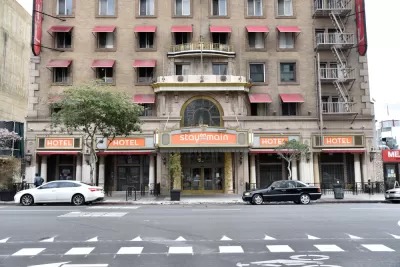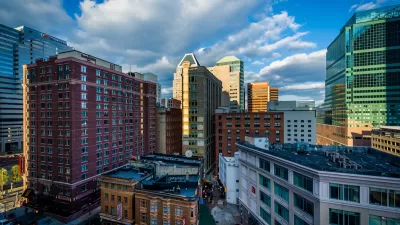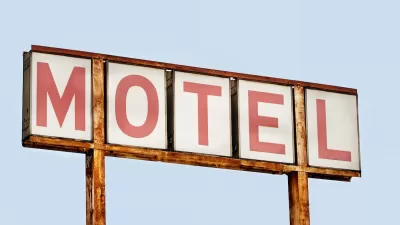An analysis of Los Angeles properties found that the city could make a significant impact on its housing shortage by converting commercial buildings to housing.

A new report found that the conversion of commercial buildings to housing could help Los Angeles reduce its critical housing shortage and boost the availability of affordable housing. According to an article by Jessica P. Ogilvie, "Researchers at the RAND Corporation, which published the report, said that such adaptive reuse could provide 9% to 14% of the housing L.A. County needs to build over the next eight years."
Because of their existing infrastructure, "Of the available options, hotels and motels would be the most feasible, said Jason Ward, the study's lead author and an economist at RAND, in a statement. Existing rooms could simply be converted into housing units."
The city experimented with this approach during the pandemic, when Project Roomkey provided emergency temporary housing in hotels and motels that were already experiencing high vacancy rates due to COVID-19 restrictions.
Even prior to the pandemic, L.A. has a successful history with adaptive reuse, which was streamlined by a 1999 city ordinance. "A paper published last year by UC Berkeley’s Terner Center for Housing Innovation found that between 2014 to 2019, L.A. created about 28,000 housing units on commercially zoned land — far more than any other large metro area in California," notes Ogilvie.
"The report issued by RAND identified about 2,300 commercial properties that could be appropriate for reuse," which could yield up to 113,000 units of housing.
FULL STORY: Why Underused Hotels, Motels Could Be The Faster Path To Easing L.A’s Affordable Housing Gap

Study: Maui’s Plan to Convert Vacation Rentals to Long-Term Housing Could Cause Nearly $1 Billion Economic Loss
The plan would reduce visitor accommodation by 25,% resulting in 1,900 jobs lost.

North Texas Transit Leaders Tout Benefits of TOD for Growing Region
At a summit focused on transit-oriented development, policymakers discussed how North Texas’ expanded light rail system can serve as a tool for economic growth.

Using Old Oil and Gas Wells for Green Energy Storage
Penn State researchers have found that repurposing abandoned oil and gas wells for geothermal-assisted compressed-air energy storage can boost efficiency, reduce environmental risks, and support clean energy and job transitions.

Private Donations Propel Early Restoration of Palisades Playground
Los Angeles has secured over $1.3 million in private funding to restore the Pacific Palisades playground months ahead of schedule, creating a modern, accessible space that supports community healing after recent wildfires.

From Blight to Benefit: Early Results From California’s Equitable Cleanup Program
The Equitable Community Revitalization Grant (ECRG) program is reshaping brownfield redevelopment by prioritizing projects in low-income and environmental justice communities, emphasizing equity, transparency, and community benefits.

Planting Relief: Tackling Las Vegas Heat One Tree at a Time
Nevada Plants, a Las Vegas-based nonprofit, is combating the city’s extreme urban heat by giving away trees to residents in underserved neighborhoods, promoting shade, sustainability, and community health.
Urban Design for Planners 1: Software Tools
This six-course series explores essential urban design concepts using open source software and equips planners with the tools they need to participate fully in the urban design process.
Planning for Universal Design
Learn the tools for implementing Universal Design in planning regulations.
Ascent Environmental
Borough of Carlisle
Institute for Housing and Urban Development Studies (IHS)
City of Grandview
Harvard GSD Executive Education
Toledo-Lucas County Plan Commissions
Salt Lake City
NYU Wagner Graduate School of Public Service





























